
A must-see in Valpolicella: San Giorgio “Ingannapoltron”
30 March 2019
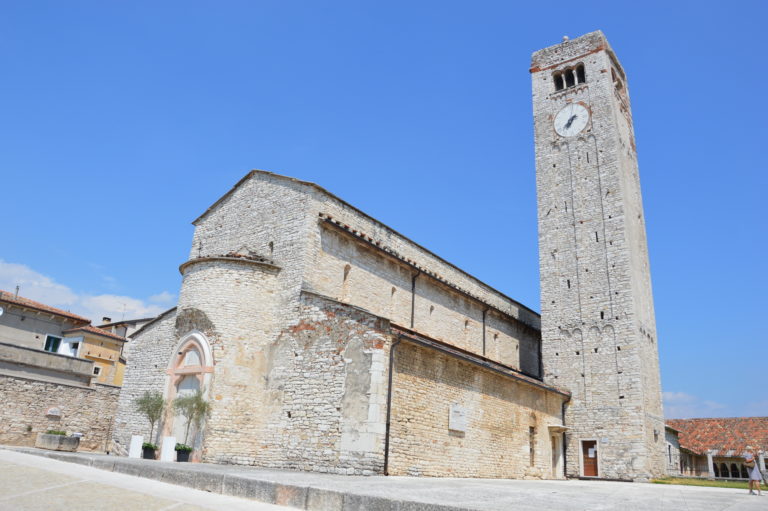
Stone, marble and wine since the dawn of time
Perched upon a hill, on an outcropping rock overlooking a majestic panorama, lies the small village of San Giorgio di Valpolicella, one of the most fascinating places in Italy. Formally, it is under the jurisdiction of Sant’Ambrogio — one of the five towns constituting the wine producing region of Valpolicella Classico, but it stands on its own, on Monte Solane, a 650 meters-high mount that probably gets its name from an ancient cult (a pagan altar with the inscription “Soli ac lunae”, a dedication to the moon and sun gods, can still be seen inside the church of San Giorgio).
Whilst lacking waterways, this territory has always been cultivated with cereals and especially vineyards, that thrive thanks to the particular climatic position. Once here, your gaze will be amazed: looking around on a clear day, you will be able to embrace Lake Garda, as well as the veronese Pre-Alps and even the Po valley!
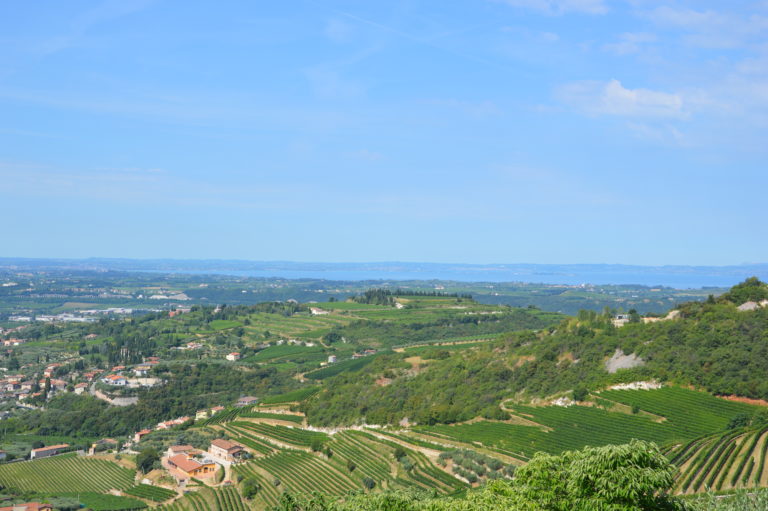
Lazy ones, beware!
As you approach this little town during your wine experience, watching it from the foot of the Valpolicella hills, it appears to be extremely close and easy to reach: however, watch out, because it is just a deception! You are faced with a tortuous path to get there, a series of fascinating but winding lanes through vineyards that has earned San Giorgio di Valpolicella the nickname “Ingannapoltron” — literally, “deceiving the lazy”.
As funny as it may sound, actually this nickname is rooted in ancient times: it probably comes from a playful alteration of San Giorgio in Ganna, where “ganne” is a pre-roman term meaning a pile of rocks. This is due to the presence of the caves from which the world-renowned veronese red marble and Pietra di Prun are extracted (learn more about this in our dedicated article). These stones were used since prehistoric times, as this place was already inhabited by ancient tribes, probably the ancestors of the so-called Arusnates, the populations living in Valpolicella during Roman times; their sheds have been excavated and can be seen just beneath the church of San Giorgio.
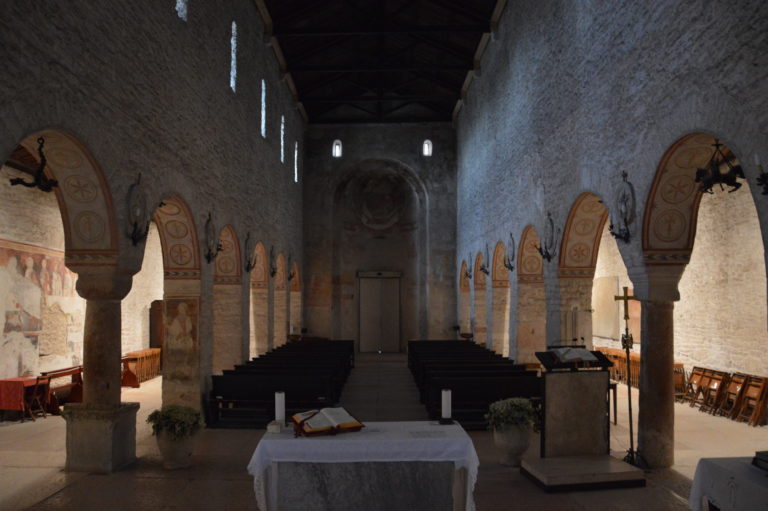
The church of San Giorgio di Valpolicella
With its bell tower and adjoining cloister, the church of San Giorgio di Valpolicella is an ancient “pieve” — that is, a parish church: dating back to 712 A.D., it was probably built on a site once used for pagan worship; the religious building you can visit nowadays is one of the most ancient and interesting examples of Romanesque architecture in the whole province of Verona. It was rebuilt around the eleventh century, when it was one of the three “piovadeghi” into which Valpolicella was administratively divided (the other two were San Floriano and Negrar). It was a rather important place, as it hosted a chapter of canons that even ran a “schola iuniorum” (a school that imparted basic notions of Latin grammar to local boys).
The church is divided in three naves, with the lateral ones half the size of the central one; embellished by frescoes, it can boast an engraved ciborium that dates it back to Lombard times, namely during the reign of king Liutprand. You will also find a museum with ethnographic suggestions, documenting local customs and traditions, and archaeological findings, such as Roman inscriptions or Lombard and Carolingian sculptures and carvings.
Don’t miss this fascinating and unique spot: during our Valpolicella-dedicated wine tours, you will be able to discover this hidden gem, a real treasure that will fill your eyes with beauty and awe!



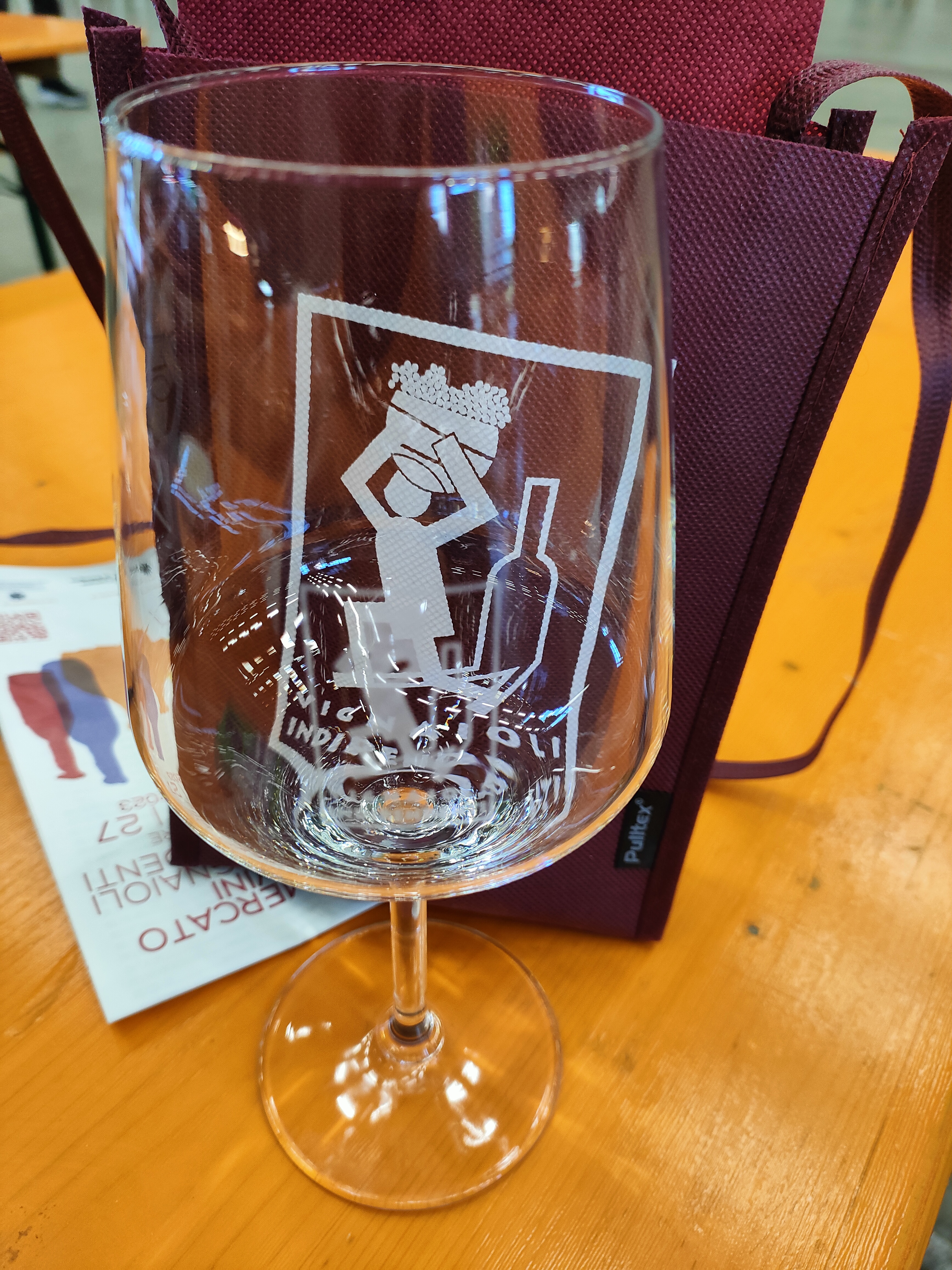

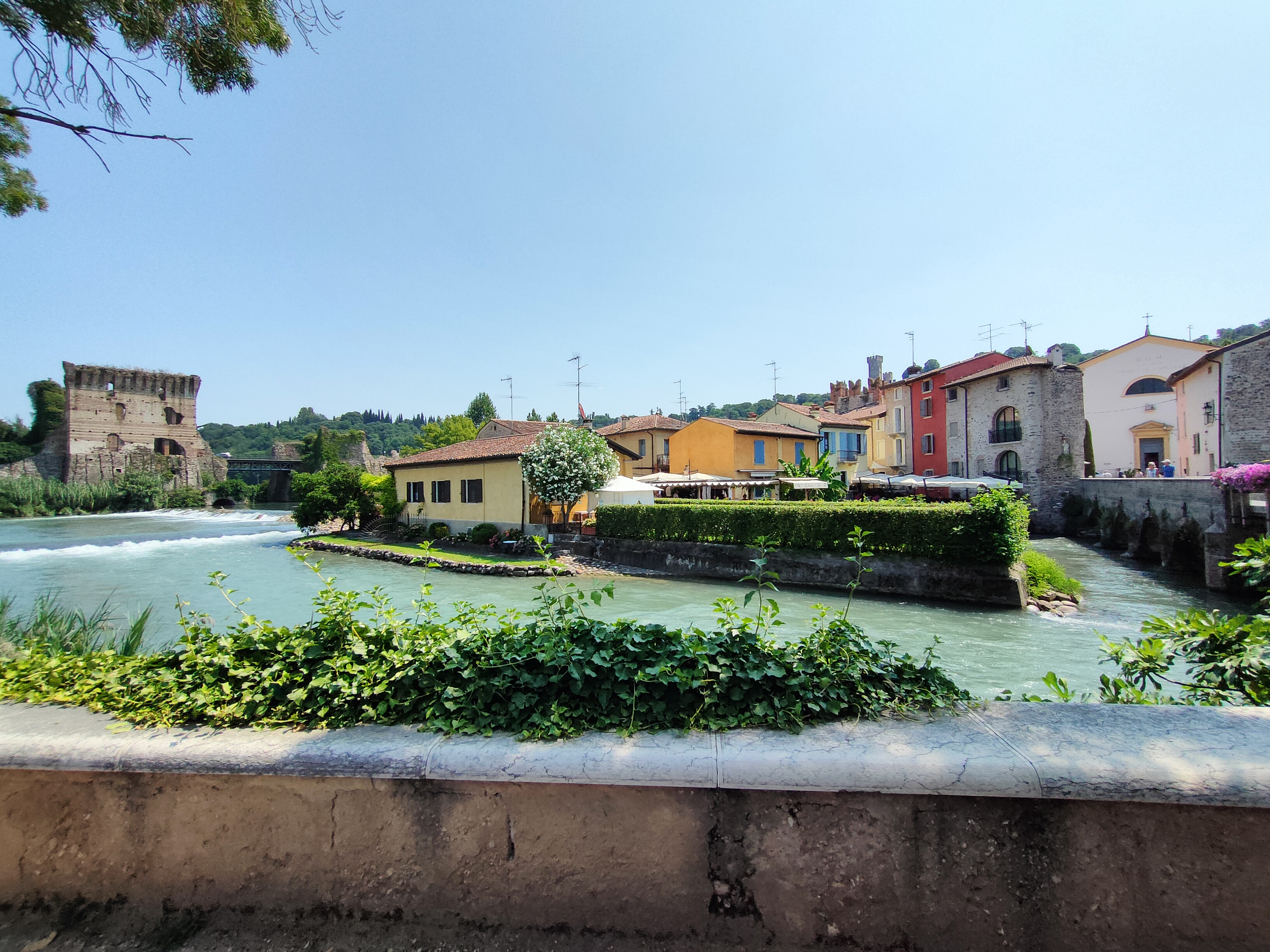
Leave a comment